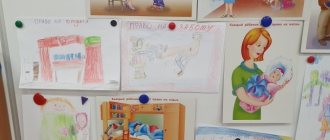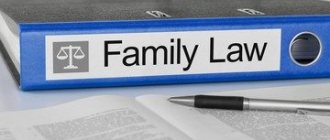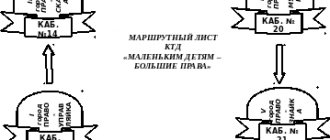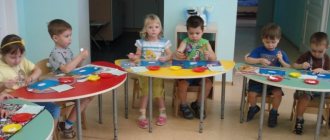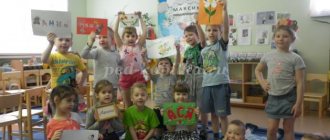Presentation on the topic: “Me and my rights” presentation for the lesson (preparatory group) on the topic
Slide 1
“Me and my rights” by teacher of preschool educational institution No. 17, Serpukhov-15, Marina Yurievna Melnikova
Slide 2
What is the name of the document that enshrines the rights of the child in our country? Convention on the Rights of the Child
Slide 3
Right to life No one can ever deprive a child of LIFE
Slide 4
What rules of behavior do children break? “A lighter is not a toy!” — Every preschool child remembers. That fire is not your friend, Children should know from the cradle! Hairdryers are very bad jokes! Explain this to the little one. Well, if it’s near the water, you can’t avoid trouble!”
Slide 5
Remember what the fairy tale is called? Think about which heroes’ right to life was violated? Who tried to violate this right? You, of course, remember that this is a Russian folk tale “The Wolf and the Seven Little Goats.” In it, the wolf tried to violate the kids’ right to life.
Slide 6
Every child has the right to a name. Children have different names. Why, why do they call us that? Here is Victoria - victory - Named at the request of her grandfather. Leonid is like a lion, I call him Lenka. And Marinochka is a sea girl, this name pleases the ear. Why, why do they call us that? Why are the names different? What does your name mean?
Slide 7
Every child has the right to know his parents, the right to their care. Try to remember proverbs and sayings about family: He who lives well, everything goes well for him. The whole family is together - and the soul is in place. He who honors his parents never perishes.
Slide 8
Every child has the right to housing and its inviolability. Look at the picture. Find the house of every fairy-tale hero. How did you guess who owns which house?
Slide 9
Look at the pictures for fairy tales. Remember their names, the names of the heroes whose right to housing was violated. Who violated this right?
Slide 10
Health is the main value of a person. Every child has the right to health and medical care. Look at the picture. Who is depicted on it? Where does the nurse work?
Slide 11
Look at the picture. What medical care does Doctor Aibolit provide to the heroes of the fairy tale of the same name?
Slide 12
Right to education Look at the picture for the fairy tale. Remember what it's called. What did Papa Carlo do to buy Pinocchio the alphabet?
Slide 13
The right to protection from economic exploitation What rights does the bear violate for Masha?
Slide 14
Right to rest and leisure
Slide 15
Right to protection from kidnapping
Slide 16
The right to cultural and national identity, native language Look at the pictures. And show me which people live in which house? In the hut there are Russians, in the tent there are Chukchi, in the yurt there are Kalmyks, in the sakla there are Ossetians.
Slide 17
Right to citizenship From birth, the child is a citizen of the state in which he lives
Slide 18
What rights of children do you remember???
Slide 19
When creating the presentation, visual aid material was used: Information and business equipment of preschool educational institutions My rights. Preschoolers about rights and responsibilities. Supplement to the magazine “Preschool Pedagogy” Publishing house “Childhood - Press”, 197348 St. Petersburg, PO Box 45
material I am a child. I have a right
SLIDE CONTENTS 1 Title. Children should always have a happy childhood. Their time should be a time of joy, a time of peace, play, learning and growth. 2 In 1989, the UN adopted a document called the Convention on the Rights of the Child. A convention is an international agreement. The states have agreed that they will respect the rights of every child in their country. And our state also signed this document, which means it gave its word to the whole world to take care of its children.
3 The main right of every person is the right to life. And a small person - a child - also has the right to live. Each country, the Convention says, must take care of newborns, help their mothers, build hospitals and clinics where doctors will save and cure the little one if he gets sick. I really want you guys to not only remember these rights yourself, but also be able to tell your friends what rights every child can use. Therefore, I suggest you take a walk through the pages of children's fairy tales. Traveling through fairy tales, we will see whether the rights of the heroes are always respected. Where fairy-tale characters are offended, that means their rights are violated. And if the heroes are cheerful and happy, then their rights are respected. Are you willing to travel with me? 4 Illustration for the fairy tale “Kolobok”. Did you recognize this fairy tale? The reasoning of the children whose rights were violated in this fairy tale (who suffered?) Who caused the harm? 5 Illustration for A. Tolstoy’s fairy tale “The Golden Key or the Adventure of Pinocchio.” Guys, every child has the right to a name. And you know what, when children are born, they are very small and similar to each other. Do you think maybe it’s not necessary to give children names, but just call them numbers? (Reflections of children). Here's another observation. Do you think maybe everyone should call each other by nicknames? (Children's answers) Remember if someone teased you and how you felt? (children's answers) It can be offensive and unpleasant. You all have very beautiful names. I asked you to ask your parents what your names mean. How many of you found out about your name? (Children’s answers) 6 Illustration for the fairy tale “Zayushkina’s hut.” A child has the right to live peacefully in his own home and feel like a master, like dad and mom. No one has the right to force you to open the door! Neither the most important boss, nor a general. In your home you are more important than any of them! No one is allowed to forcefully break into someone else's house. Every person should feel safe at home. 7 Guys, what do you think education is? What is it for? (Children's answers). Let's think about where you can get an education? (Children’s answers. Do you enjoy the right to education? What do you attend? (Children’s answers - kindergarten, clubs, music school, etc.) 8 Illustration for the Russian folk tale “The Snow Maiden”. What mood did the heroes of the fairy tale feel in? And why ? (Children's answers) The Snow Maiden has a family. What right of a girl can be said in this fairy tale? (Children's answers). What pictogram icon will we use to mark the right to be raised in a family environment or the right to have a family? (Children's answers) 9 Illustration for Russian folklore fairy tale "Geese-Swans", what do you think is the mood of the main characters of the fairy tale? (Children's answers). What right of children was violated in this fairy tale? (Children's answers) 10 Illustration for Kataev's fairy tale "Tsvetik-Semitsvetik". The child has the right relax, play, have fun. The right to rest, to play, to celebrate holidays is written in the Convention on the Rights of the Child.
Presentation “Children’s Legal Aid Day”
#Educational materials #Presentation #Educator #Psychologist #Speech therapist #Music director #Preschool education
The main documents that contain the rights of the child: The Declaration of the Rights of the Child was adopted by the UN General Assembly (11/20/1959) The Convention on the Rights of the Child was adopted by the UN General Assembly (11/20/1989) in our country came into force on 09/02/1990 Constitution RF (Chapter 2 Rights and freedoms of man and citizen adopted on December 12, 1993) Family Code of the Russian Federation (adopted on November 15, 1997) Federal Law of July 24, 1998 N 124-FZ “On the basic guarantees of the rights of the child in the Russian Federation.”
International documents on children's rights: The Declaration of the Rights of the Child is an official document that states the rights of the child. It declares the basic principles and recommendations. There are ten of them in total. The Universal Declaration of Human Rights states that “the fundamental right of every person is the right to life.” The Convention on the Rights of the Child is an international treaty that sets out the rights of the child. Convention translated from Latin is a treaty, an agreement on a special issue that is binding on those states that have signed it. It contains three parts, 54 articles.
The Constitution of the Russian Federation is the basic Law of our country. Fundamental rights can be classified as: * personal (right to life); * political (right to freedom of speech, conscience); * civil (suffrage); * socio-economic (right to work, rest, education, clean environment); * cultural (the right to one’s national culture, language).
The Constitution of the state also enshrines the basic responsibilities of citizens: * Observe the laws of the state * Pay taxes, fees * Protect the Fatherland * Preserve nature * Take care of children and disabled parents * Preserve cultural monuments
In addition to the Constitution of the Russian Federation, the rights of a child student are also enshrined in other documents: Federal Law “On Education in the Russian Federation” Law “On Basic Guarantees of the Rights of the Child in the Russian Federation” 120 - Federal Law “On the Fundamentals of the System for the Prevention of Neglect and Juvenile Delinquency” Charter of the Preschool Educational Institution
A person's life begins in the family. If peace and harmony reign in the family, a person feels confident and calm. In the Russian Federation, the family is the object of state family policy. The goal of state family policy is to provide the state with the necessary conditions for the family to realize its functions and improve the quality of life. Family relations are regulated in our country by family law. “A child is a person until he reaches the age of 18 years (the age of majority)”, - RF Law of July 24, 1998 No. 124-FZ “On the Basic Guarantees of the Rights of the Child in the Russian Federation”).
* to receive a surname, name, patronymic; * live and be raised in a family; * know your parents, live together with them, as well as care from your parents, education by them and comprehensive development; * to communicate with parents and other relatives (in case of divorce between parents, separation of parents, stay in a medical institution, in case of detention, arrest, detention); * to protect and restore their legal rights and interests; * to express one’s opinion when resolving any issue in the family; * to receive maintenance from their parents and other family members; * own and use the property of parents when living together with them; * for housing and protection of their housing rights from abuse, including by parents (guardians, trustees); * ownership of property received as a gift or by inheritance. A child in a family has the right:
At what age does a child have the right to express his or her own opinion? This age is not limited by law. The child has the right to express his opinion when resolving any issues affecting his interests in the family.
Who and how is obliged to protect the rights and legitimate interests of the child? The protection of the rights and legitimate interests of the child is carried out by parents, adoptive parents, guardians, trustees, guardianship and trusteeship authorities, the prosecutor, and the court. If the rights and legitimate interests of a child are violated by parents, the child has the right to apply to the guardianship and trusteeship authorities, and upon reaching the age of 14, to independently go to court.
Everyone should know and remember that when exercising their own rights, it is unacceptable to violate the rights of other people. “By what measure would you like to be measured, so do you, and as you want to be treated, so do you” - this is how the biblical sages imagined the relationship between rights and responsibilities
All children have equal rights, regardless of race, colour, sex, language, religion, political or other opinion, and regardless of the place of birth and status of their parents. * the right to learn, be educated and develop physically and spiritually, in healthy and normal conditions; * the right to a name and belonging to a country; * the right to protection, good food, housing and medical care; * the right to love and understanding from one’s parents and family, as well as from the state if relatives cannot help; * the right to be protected against acts of cruelty or exploitation, they are not obliged to do work that impedes their development, either physically or mentally
Unified human rights lesson in kindergarten with presentation
Lesson for preschool teachers on the topic “Unified lesson on human rights in a preschool institution”
A lesson for preschool teachers as part of the Unified Human Rights Lesson with a presentation.
Author: Goritskova Olga Aleksandrovna Human Rights Day. On December 10, Human Rights Day is celebrated around the world. The event was established by resolution No. 423 (V) of December 4, 1950, of the 317th plenary meeting of the UN General Assembly (GA). On this day in 1948, the Universal Declaration of Human Rights was adopted. In 2022, the date will be celebrated for the 70th time. On the eve of International Human Rights Day, educational organizations of the Russian Federation are holding a Unified Human Rights Lesson. A single lesson is an occasion to once again remember the rights of children and turn to the Convention on the Rights of the Child. History of human rights. The concept of “human rights” was first found in the French “Declaration of the Rights of Man and the Citizen,” adopted in 1789. Before this, the concept of natural rights or “rights from birth” had come a long way. However, only the experience of the Second World War, its victims and atrocities were able to fundamentally change and change the understanding of human rights throughout the world. In 1945, a trial of the main Nazi war criminals took place in the German city of Nuremberg. At the trial, for the first time in human history, war crimes against people were called crimes against humanity. In response to World War II, and primarily to help identify ways to prevent such disasters in the future, the United Nations was formed, with human rights enshrined in its charter. The main mission of the new organization is to “save future generations from the scourge of war” and to “reaffirm faith in fundamental human rights.” In 1946, the United Nations created the Commission on Human Rights, which is the main policy-making body on human rights within the UN system. The commission set about defining fundamental rights and freedoms. It now has 53 members, who meet annually to discuss active human rights issues and put forward proposals for changes to international law. The next stage was the adoption of the Universal Declaration of Human Rights by the General Assembly on December 10, 1948 in Paris. It sets out a list of fundamental human rights that people throughout the world have, regardless of their race, color, sex, language, religion, political or other opinion, national or social origin, property, birth or other status. Subsequently, on the basis of the Declaration, the International Covenant on Civil and Political Rights and the International Covenant on Economic, Social and Cultural Rights were adopted. Both of these pacts were adopted in 1966 and entered into force in 1976. Together with the Universal Declaration, they constitute the International Bill of Human Rights. In 1950, the UN decided to celebrate the day of adoption of the Universal Declaration of Human Rights as Human Rights Day. The purpose of this holiday is not only to encourage the ideals of the Declaration, the principles of justice and equality for all, but to remind that the goal of making the Declaration a reality for everyone remains unfulfilled. The European countries that suffered the most during the war advocated the creation of the European Convention for the Protection of Human Rights and Fundamental Freedoms, which was approved in 1950. The main difference of this Convention was the creation of the European Court of Human Rights, which is directly a mechanism for protecting the rights specified in the Convention. The protection of children's rights occupies a special place in the history of human rights. After World War I, in 1919, the League of Nations created the Committee for Children's Welfare.
The Committee's focus was on the problems of child neglect, slavery, child labor, child trafficking and minor prostitution. The main role in the development of social standards for the protection of children in that period was played by international organizations, among which the most famous was the International Union for the Rescue of Children. In 1924 in Geneva, the League of Nations adopted the Declaration of the Rights of the Child proposed by the International Save the Children Union. This is the first international legal document in the field of protecting the rights and interests of children. In 1946, the UN established the UNICEF Children's Fund, the purpose of which is international assistance to children, and in 1959 the UN adopted the Declaration of the Rights of the Child. 10 social and legal principles say: humanity has a duty to give the child the best it has. By the end of the 1970s, however, it became apparent that existing human rights standards could not meet the special needs of children. A single international document was required that would combine all previous experience and new ideas about the protection of children's rights. At the initiative of Poland, the UN Commission on Human Rights began to develop a special Convention on the Rights of the Child, which was adopted on November 20, 1989. The convention took 10 years to develop. For the first time, a child began to be viewed not only as an object requiring special protection, but also as a subject of law, to whom the full range of human rights is presented. The Convention recognizes the child as a full-fledged and full-fledged person. It is a recognition that children should have human rights in their own right, and not as an appendage of their parents or guardians. The Convention on the Rights of the Child states that the main right of every person is the right to life and the creation of the best provision for the realization of the interests of the child. Presentation on the topic: Convention on the Rights of the Child
We recommend watching:
Entertainment with children of the preparatory group about the rights of the child Scenario of entertainment for children of the senior group about the rights of the child Familiarization of preschool children with their rights Preschoolers about the rights of the child
Similar articles:
Summary of educational activities in the senior group on the topic “Children’s Rights”
Project on legal education of children “I am a child and have the right...”
One of the forms of work on the legal education of children in preschool educational institutions is the project method,
which allows combining the interests of all subjects of the preschool educational institution: children, parents, teachers, preschool educational institutions specialists, the social environment, while the efforts of adults should be aimed at creating conditions for the manifestation of children’s creativity, activities are organized in accordance with their interests, desires and needs, and parents have the opportunity to actively participate in the legal education of their children.
A long-term project on the legal education of children “I am a child and I have the right...”, which includes several co-projects: with young children “My Family”, middle age “What do our names mean”, the senior group “Friendly Children” and the preparatory group “Everyone” has the right to!".
The main idea of the project is the recognition of the child as a full-fledged and full-fledged person: free and responsible, knowing his rights and adequate ways of behavior in cases of their violation, having self-esteem and respecting other people. This project is a system of organizational and pedagogical activities and actions that ensure the integration of methods and forms of organizing legal education, which meets the Federal State Educational Standard for Preschool Education and is built on the principles of developmental education, scientific validity and practical applicability of the educational process of preschool educational institutions.
Expected results:
After the implementation of the project, children will know their rights (the right to life, name, family, freely express their views, the right to receive information and education, to use health care services) and responsibilities (to help adults, respect elders, etc.), will apply the acquired knowledge in practical activities - creative and educational games, will try to use this
This knowledge in communicating with other children will demonstrate the ability to reason, compare, draw conclusions about children’s rights, and will be ready to correctly evaluate themselves and others.
Practice-oriented project “Everyone has the right!”
(long-term, open), preparatory group, children 6-7 years old.
| Project topic | Legal education of older preschoolers |
| 1 | 2 |
| Direction | Social and personal |
| Name of the organization | Municipal budgetary preschool educational institution “Kindergarten No. 2 “Little Red Riding Hood” of a general developmental type with priority implementation of activities for the physical development of children, Lesnoy, Sverdlovsk region. |
| FULL NAME. author, position | Teachers: Komarova Natalya Viktorovna Cherezova Marina Vasilievna |
| Regulatory and legal framework of the project | Convention on the Rights of the Child Charter of MBDOU Regulatory and legal framework of a preschool educational institution. Collection of documents. |
